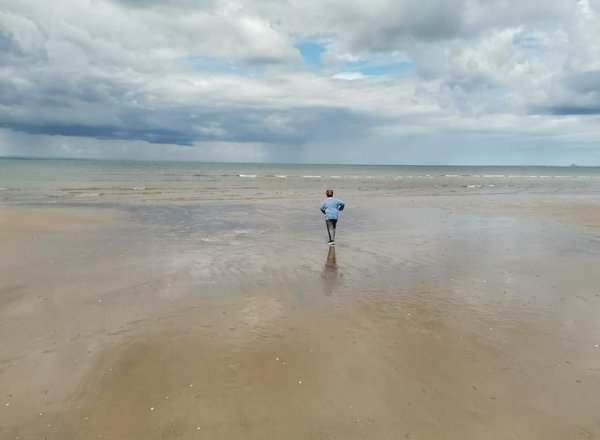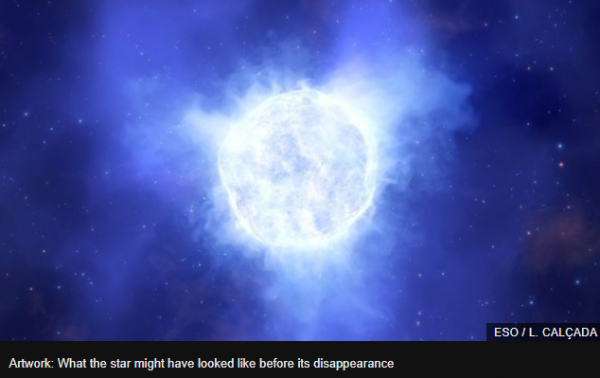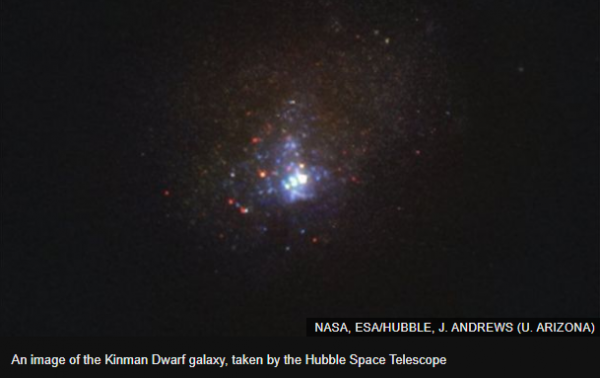-
Posts
20,851 -
Joined
-
Last visited
-
Days Won
49
Everything posted by CaaC (John)
-
And they say it's nothing to do with poachers? Hundreds of elephants found dead in Botswana Mystery surrounds the "completely unprecedented" deaths of hundreds of elephants in Botswana over the last two months. Dr Niall McCann said colleagues in the southern African country had spotted more than 350 elephant carcasses in the Okavango Delta since the start of May. No one knows why the animals are dying, with lab results on samples still weeks away, according to the government. Botswana is home to a third of Africa's declining elephant population. Warning: Some people may find the following images upsetting (link) Dr McCann, of the UK-based charity National Park Rescue, told the BBC local conservationists first alerted the government in early May after they undertook a flight over the delta. "They spotted 169 in a three-hour flight," he said. "To be able to see and count that many in a three-hour flight were extraordinary. "A month later, further investigations identified many more carcasses, bringing the total to over 350." "This is totally unprecedented in terms of numbers of elephants dying in a single event unrelated to drought," he added. Back in May, Botswana's government ruled out poaching as a reason - noting the tusks had not been removed, according to Phys.org. There are other things which point to something other than poaching. "It is only elephants that are dying and nothing else," Dr McCann said. "If it was cyanide used by poachers, you would expect to see other deaths." Dr McCann has also tentatively ruled out natural anthrax poisoning, which killed at least 100 elephants in Bostwana last year. But they have been unable to rule out either poisoning or disease. The way the animals appear to be dying - many dropping on their faces - and sightings of other elephants walking in circles point to something potentially attacking their neurological systems, Dr McCann said. Either way, without knowing the source, it is impossible to rule out the possibility of a disease crossing into the human population - especially if the cause is in either the water sources or the soil. Dr McCann points to the Covid-19 pandemic, which is believed to have started in animals. "Yes, it is a conservation disaster - but it also has the potential to be a public health crisis," he said. Dr Cyril Taolo, acting director for Botswana's department of wildlife and national parks, told the Guardian they had so far confirmed at least 280 elephants had died and were in the process of confirming the rest. However, they did not know what was causing the animals' deaths. "We have sent [samples] off for testing and we are expecting the results over the next couple of weeks or so," he said. https://www.bbc.co.uk/news/world-africa-53257512
-
We can dream though "Beam me up @nudge"...sigh
- 1,657 replies
-
- space exploration
- astronomy
-
(and 1 more)
Tagged with:
-
Faster-than-light travel: Is warp drive really possible? A NASA scientist recently released a report analysing the feasibility of warp drive as a means of faster-than-light travel. Could this Star Trek technology really be possible? ________________________________________________________________________________________________________________________________________________________ In the Universe of Star Trek, humanity ventures out into the Galaxy on 5 April 2063 with the first-ever journey on a ship capable of faster-than-light travel. The newly-invented ‘warp drive’ not only lets humans explore the cosmos, but attracts the attention of Vulcans and brings about our first contact with an alien species. It’s been 54 years since we were first introduced to the Enterprise, and many of Star Trek’s futuristic technologies have since been invented, from handheld communicators to universal translators. Warp drive is the next obvious choice: Voyager 1, which has travelled furthest from Earth of any spacecraft, took nearly 35 years to leave the Solar System. Not exactly handy for interstellar travel. Luckily for humanity, theoretical physicists have been working on it. In May 2020, NASA scientist Harold “Sonny” White released an internal feasibility report discussing the technology from the point of view of ‘early mission planning’. The first scientific theory of warp drive came about in 1994 when theoretical physicist Miguel Alcubierre used Einstein’s theory of General Relativity to develop a framework that would allow faster-than-light travel within the confines of the laws of physics. The key that makes it possible is that, technically, the ship itself doesn’t travel faster than light. “What warp drive is doing is basically saying that there is no law of physics that says space-time itself can’t go faster than the speed of light,” says Dr Erin Macdonald, astrophysicist and science consultant for Star Trek. “And so the concept of warp drive is to say, all right, let’s take our ship, let’s build a bubble of space-time around it, and then we’ll have that propel us faster than the speed of light,” she says. It’s similar to the idea of a racecar driving onboard a train: someone standing by the tracks would see the car travelling much faster than its top speed. According to General Relativity, the Universe is a flat sheet of space-time which is warped by any object with mass. “We think of the bowling ball on the trampoline and that bowling ball dips the trampoline down,” says Macdonald, “and that’s what mass does to space-time.” This distortion of space-time is what we experience as gravity. The Alcubierre drive uses the same concept. The ‘bubble’ surrounding the ship is an area of space-time that is compressed in front of the ship and expanded behind it. As with gravity, you could create this distortion using a large amount of mass. Alternatively, thanks to Einstein’s E = mc2 (energy is equal to mass, times the speed of light squared), you could equally use a huge amount of energy. Inside the bubble, space-time is completely flat, meaning the space travellers wouldn’t notice any strange, relativistic effects. The result is that the bubble of space-time is hurled across the Universe, with the travellers sitting comfortably inside their ship, speedometer still reading the same number. Unfortunately, actually creating a warp drive is even harder than it sounds. “You have to have a very, very large amount of energy,” says José Natário, Associate Professor in mathematics at the Instituto Superior Técnico in the University of Lisbon. “To have the deformation that you need for this kind of thing to work, you’d need much, much more energy than the Sun or the Galaxy,” he says. “But also, it’s negative energy.” Negative energy is not something that we can currently create – certainly not in the quantities needed to power a warp drive. How could energy be negative at all? One way to think about it is to consider a particle with negative mass. These particles would react to gravity in the exact opposite way to particles of positive mass. Instead of being pulled towards a planet or star, they would be thrown away. “If we had some sort of component like that where we had a negative mass, whatever is keeping that mass together would be that negative energy,” says Macdonald. This isn’t a problem that will go away with refining the idea, either: Natário proved mathematically that any form of warp drive will require negative energy. Joseph Agnew is a graduate student at the University of Alabama in Huntsville whose undergraduate work on warp drive was published in the AIAA journal. He thinks that more research into the fundamentals of physics is the way forward for warp drive. “Further experimental study of naturally occurring gravitational waves and perhaps a study on trying to generate artificial gravitational waves would really advance the understanding of gravity, and therefore spacetime and all the connected science,” Agnew says. Star Trek‘s USS Enterprise, the iconic warp-capable ship © Alamy Natário believes there’s an even greater problem with the concept of the Alcubierre drive. Imagine a supersonic aircraft travelling faster than the speed of sound. You don’t hear the aircraft until it has already gone past, because the sound waves can’t keep up. The warp drive experiences the same effect with light waves, meaning there is no way to send a message ahead of you. “I call it the ‘you need one to make one’ problem,” says Natário. How do you create the warped space-time geometry around your ship? First, you would need to send a signal ahead of you to ‘tell’ space-time to warp, Natário says. “To make it go faster than light, you need something that would be going faster than light, to begin with, so that you’d be able to communicate outside the horizon.” These two problems – combined with the slight issue that the travellers would be bombarded with incredibly high-energy radiation – are the downfall of warp drive, Nátario believes. “The bottom line is, in my opinion, it’s completely impossible,” he says. Agnew is more optimistic. “Many of these theoretical space transportation concepts rely extensively on a thorough understanding of gravity and spacetime, which just isn’t the case currently,” he says. “I don’t yet see any way we can say, with absolute certainty, that it will ‘never happen in a million years’. When in doubt, history dictates it’s better to err on the side of cautious, scientific optimism.” Macdonald, too, is hopeful. “I’m an eternal optimist with this because I want to join Starfleet,” she says. “The way I think about it is it’s like we never know what’s going to come down the pipe with sort of these weird, exotic, fun thought experiments. “I agree at this stage, right now, it’s a fun thought experiment. But that’s not to preclude some massive discovery that may happen that we can’t predict.” Science Focus
- 1,657 replies
-
- 1
-

-
- space exploration
- astronomy
-
(and 1 more)
Tagged with:
-
@Stan, @nudge and others might help you out on that one, funny I have it?
-
My phones a Samsung but as far as I know you should get the same as me on your phone because that is used in TF365, did you scroll down all the way, try that and you might see it?
-
After humanity: A timeline of the Earth after we go extinct A step by step, day by day guide to how nature and the planet adjust after humanity exits the stage. _____________________________________________________________________________________________________________________________________ After two days Without active maintenance and pumping, New York City’s subways flood with water and become impassable. Seven days in Fuel runs out at the emergency generators that pump coolant into nuclear power plants. Approximately 450 reactors around the world begin to meltdown . After one year Human head and body lice go extinct, while cockroaches in cities at temperate latitudes freeze to death. Domestic and farm animals perish in enormous numbers. Three years later Pipes burst in colder regions, flooding cities with water. Buildings lose structural integrity as they expand and contract with temperature changes. 20 years post-human-extinction The Panama Canal closes, rejoining North and South America. Many crops disappear, outcompeted by wild varieties. 300 years on Most of the world’s bridges fall. Dams silt up and overflow, washing away entire cities. Suburbs become forests as endangered species rebound. 100,000 years CO2 in the atmosphere returns to pre-industrial levels. Microbes evolve to biodegrade plastic. Plutonium bombs made during the age of humans become safe to handle. 10,000,000 years Bronze sculptures are still recognisable, as are the faces on Mount Rushmore. Life still thrives on Earth, but in new forms. https://www.sciencefocus.com/planet-earth/after-humanity-a-timeline-of-the-earth-after-we-go-extinct/
-
-
-
Archaeologists in Turkey Have Uncovered a Mysterious Ancient Kingdom Lost in History SLIDES - 1/3 It was said that all he touched turned to gold. But destiny eventually caught up with the legendary King Midas, and a long-lost chronicle of his ancient downfall appears to have literally surfaced in Turkey. Last year, archaeologists were investigating an ancient mound site in central Turkey called Türkmen-Karahöyük. The greater region, the Konya Plain, abounds with lost metropolises, but even so, researchers couldn't have been prepared for what they were about to find. A local farmer told the group that a nearby canal, recently dredged, revealed the existence of a large strange stone, marked with some kind of unknown inscription. "We could see it still sticking out of the water, so we jumped right down into the canal – up to our waists wading around," said archaeologist James Osborne from the University of Chicago earlier this year. "Right away it was clear it was ancient, and we recognised the script it was written in: Luwian, the language used in the Bronze and Iron Ages in the area." With the aid of translators, the researchers found that the hieroglyphs on this ancient stone block – called a stele – boasted of a military victory. And not just any military victory, but the defeat of Phrygia, a kingdom of Anatolia that existed roughly 3,000 years ago. The royal house of Phrygia was ruled by a few different men called Midas, but the dating of the stele, based on linguistic analysis, suggests the block's hieroglyphics could be referring to the King Midas – he of the famous 'golden touch' myth. The stone markings also contained a special hieroglyphic symbolising that the victory message came from another king, a man called Hartapu. The hieroglyphs suggest Midas was captured by Hartapu's forces. "The storm gods delivered the [opposing] kings to his majesty," the stone reads. What's significant about this is that almost nothing is known about King Hartapu, nor about the kingdom he ruled. Nonetheless, the stele suggests the giant mound of Türkmen-Karahöyük may have been Hartapu's capital city, spanning some 300 acres in its heyday, the heart of the ancient conquest of Midas and Phrygia. "We had no idea about this kingdom," Osborne said. "In a flash, we had profound new information on the Iron Age Middle East." There's a lot more digging to be done in this ongoing archaeological project, and the findings so far should be considered preliminary for now. The international team is eager to revisit the site this year, to find out whatever more we can about this kingdom seemingly lost in history. "Inside this mound are going to be palaces, monuments, houses," Osborne said. "This stele was a marvellous, incredibly lucky find - but it's just the beginning." https://www.msn.com/en-gb/news/offbeat/archaeologists-in-turkey-have-uncovered-a-mysterious-ancient-kingdom-lost-in-history/ar-BB165GCt
-
Mystery over monster star's vanishing act Astronomers have been baffled by the disappearance of a massive star they had been observing. They now wonder whether the distant object collapsed to form a black hole without exploding in a supernova. If correct, it would be the first example of such a huge stellar object coming to the end of its life in this manner. But there is another possibility, the study in Monthly Notices of the Royal Astronomical Society reports. The object's brightness might have dipped because it is partially obscured by dust. It is located some 75 million light-years away in the Kinman Dwarf galaxy, in the constellation of Aquarius. The giant star belongs - or belonged - to a type known as a luminous blue variable; it is some 2.5 million times brighter than the Sun. Stars of this kind are unstable, showing occasional dramatic shifts in their spectra - the amount of light emitted at different wavelengths - and brightness. Between 2001 and 2011, various teams of astronomers studied the massive star, concluding that it was in a late stage of evolution. The Kinman Dwarf galaxy is too far away for astronomers to see its individual stars, but they can detect the signatures of some of them. In 2019, a team led by PhD student Andrew Allan of Trinity College Dublin, Ireland, targeted the galaxy, with the aim of finding out more about how very massive stars end their lives. But when they pointed the European Southern Observatory's (Eso) Very Large Telescope (VLT) at it, they could no longer find the tell-tale signatures of the star. Mr Allan commented: "We were surprised to find out that the star had disappeared!" He added: "It would be highly unusual for such a massive star to disappear without producing a bright supernova explosion." The older observations seem to indicate that the star was experiencing giant eruptions, in which material is lost from the star. These are thought to have stopped sometime after 2011. Luminous blue variable stars such as this one are prone to such outbursts over the course of their life. They cause the star to lose mass and lead to a dramatic peak in brightness. Based on their observations and models, the astronomers suggest two explanations for the star's disappearance and lack of a supernova. The outbursts may have resulted in the luminous blue variable being transformed into a less luminous star, which could also be partly hidden by dust. Alternatively, the team says the star may have collapsed into a black hole, without producing a supernova explosion. This would be a rare event: our current understanding of how massive stars die suggests most of them meet their end in a violent nova. If the black hole explanation is correct, says Mr Allan, "this would be the first direct detection of such a monster star ending its life in this manner". Co-author Jose Groh, also of Trinity College Dublin, commented: "We may have detected one of the most massive stars of the local Universe going gently into the night." Future studies are needed to confirm what happened to the star. Eso's Extremely Large Telescope (ELT) - expected to begin operations in 2025 - will be capable of resolving stars in distant galaxies such as the Kinman Dwarf, helping to shed more light on cosmic mysteries such as this one. https://www.bbc.co.uk/news/science-environment-53235909
- 1,657 replies
-
- space exploration
- astronomy
-
(and 1 more)
Tagged with:
-
Forget about that, use "click to choose files" like I have just done and that went into my phone album with images I had saved and inserted them and posted in here, remember, you have to have images on your phone to insert them in here. You best do what I mentioned in my PM, practise and reply there so we don't knock this thread off-topic.
-
It's been all rain, thunder & lightening the last 2 days but muggy as fuck, today is a mixture of sun, cloud and drizzly rain on & off but still muggy. We have the flat window open and there is a wee midge flying around and it's annoying the shite out of me, every time I try and swipe it, it just pisses off somewhere else then comes back again like a bloody German Stuka dive-bombing me, nearly knocked my coffee over trying to kill the bastard!!!!
-
Ahhh, mobile, you sure you haven't got these options on your mobile, I thought all mobiles had these options? if you choose 'File' then that will open any photos or gfs stored in your mobile.
-
You still have not got the knack of it then. @Gunnersauraus
-
This tiny lion with teeth like bolt-cutters once roamed Australia Reconstruction of Lekaneleo roskellyae hunting in the early Miocene rainforest at Riversleigh in northwestern Queensland. (CNN)- Researchers have discovered a new type of lion, the size of a domestic cat, with powerful flesh-cutting teeth, which roamed the earth around 24 million years ago. Palaeontologists discovered the remains of the creature at Australia's Riversleigh World Heritage Area in Queensland, where experts have been excavating fossils by dissolving limestone rock deposits with acid for more than 40 years. Researchers from the University of New South Wales uncovered a partial mammal's skull, and initially presumed that it belonged to the Priscileo Rauscher genus of a marsupial lion because of its teeth and size. Marsupial lions died out 35,000 years ago and varied in size, with some as big as a modern-day African lioness, Michael Archer, professor of biological, earth and environmental science at the University of New South Wales, told CNN. Experts studied the mammal's skull and lower jaw and noticed the animal's skull anatomy was different than what they had previously encountered in other marsupial lions. "As we found more and better specimens at Riversleigh, we began to realize it didn't belong to that group at all. It was a new kind of marsupial that hadn't been seen before," Archer, who worked alongside lead author Anna Gillespie and Suzanne Hand, told CNN. "It was a different branch on the marsupial lion family tree," he said. It was only by studying the creature that researchers realised how "significantly different" the animal, named Lekaneleo, was. In a paper published in the Journal of Vertebrate Paleontology, researchers confirmed that the mammal was a new genus of the marsupial lion. Lekaneleo would have been the "size of a pussycat," Archer said, but had "probably the most powerful flesh-cutting teeth that we've ever seen." "Lekaneleo had teeth in it that are a bit like micro bolt-cutting teeth; there is nothing this animal decided to eat that it couldn't have cut into bite-size, swallowable pieces almost immediately," Archer said. Marsupials are a group of animals commonly known as "pouched mammals," endemic to Australasia and the Americas. Koalas, kangaroos, wallabies and wombats belong to the group, which is characterized by premature birth followed by feeding the newborn from the mother's nipples. Experts believe that Lekaneleo lived in trees, surviving on creatures including birds, snakes, possums -- and even animals the size of sheep. Although they are named "lions," researchers said the animals were more closely related to kangaroos and koalas. Experts say that in understanding the demise of now-extinct creatures like the marsupial lion, we will have a better understanding of how climate change will affect modern-day animals. "These are such different kinds of carnivorous mammals that they were occupying an ecological niche that nothing today is similar to," Archer told CNN. "In a sense, it tells us how we have lost many distinctive specialized kinds of animals over time. And this is the result of climate change," he said. "We see many of these very strange groups that don't have any living representatives, slowly disappearing. Understanding this whole relationship between environmental change and biodiversity is very important in understanding and anticipating what's going to happen now," he said. CNN
-
I think I remember Teso posting about this young lad or Yank as Teso called him, is he really the next Bees Knees from Barca? American 18-year-old winger Konrad de la Fuente has signed a contract extension at Barcelona that will see his release clause rise to 100m euros (£91m) if he makes the first team. (AS) ______________________________________________________________________________________________________________
-
Watching that reminds me of the opening scene of 2001: A Space Odyssey, and the haunting music that can mesmerise you, well, it does to me.
- 1,657 replies
-
- space exploration
- astronomy
-
(and 1 more)
Tagged with:
-
Betelgeuse, the curiously dimming star, maybe covered in giant starspots (CNN) - Betelgeuse, the red supergiant star that acts as the shoulder of Orion in his constellation, intrigued astronomers when the normally bright star showed signs of unprecedented dimming in December. Many have suggested potential causes for this dimming, including dust or the fact that the star is likely to explode in a supernova between now and 100,000 years from now. New research has suggested that large starspots, like sunspots on our sun, are on the surface of Betelgeuse and causing the dimming. The researchers said their result rules out the dust scenario, which suggested that Betelgeuse ejected dust and it was obscuring the star. The study published Monday in The Astrophysical Journal Letters. Betelgeuse is estimated to be a few million years old and is about 700 light-years away. And the "supergiant" name is no joke: According to NASA, the star is thought to be somewhere between the diameter of Mars and Jupiter's orbits in size. It's estimated to be between 11 to 12 times the mass of our sun. Astronomers expected it to begin dimming in December because the star experiences periods of dimming and subsequent brightening every 425 days However, Betelgeuse dropped to 40% of its normal luminosity between October 2019 and April 2020, which surprised astronomers. Thavisha Dharmawardena, a postdoctoral researcher at the Max Planck Institute for Astronomy in Germany, led a team of international astronomers as they studied Betelgeuse amid this unusual dimming episode. The team's data showed that temperature variations in the surface of the star caused the drop in brightness. And the most probable cause of this would be gigantic starspots covering 50% to 70% of Betelgeuse's surface. "Towards the end of their lives, stars become red giants," Dharmawardena said in a statement. "As their fuel supply runs out, the processes change by which the stars release energy. As a result, they bloat, become unstable and pulsate with periods of hundreds or even thousands of days, which we see as a fluctuation in brightness." The star is so massive that the gravitational pull on the surface is less than that of a smaller star, so any pulsating by the star can actually eject layers of it easily. When this gas released by the star cools, it essentially forms a dust. Dharmawardena and her collaborators analyzed new and archival data taken from the Atacama Pathfinder Experiment in Chile and the James Clerk Maxwell Telescope in Hawaii to search for this dust. Both telescopes can measure radiation in submillimeter waves, which have wavelengths a thousand times greater than that of visible light. This allows them to study interstellar dust, which is otherwise invisible — but can emit a glow in these particular waves. "What surprised us was that Betelgeuse turned 20% darker even in the submillimetre wave range," said Steve Mairs, study co-author and researcher at the East Asian Observatory in Hawaii, in a statement. New photos show Betelgeuse star's unprecedented dimming Betelgeuse star will explode Why the world is waiting for Betelgeuse to go supernova Star spots on a grand scale This darkening of Betelgeuse didn't match up with their dust hypothesis. But the data reflected that the star was causing its own change in brightness and a dip in surface temperature. "Corresponding high-resolution images of Betelgeuse from December 2019 show areas of varying brightness," said Peter Scicluna, study co-author and researcher at the European Southern Observatory, in a statement. "Together with our result, this is a clear indication of huge starspots covering between 50 and 70% of the visible surface and having a lower temperature than the brighter photosphere [or luminous surface of the star]." While starspots are common in giant stars, it's not usually on this scale, the researchers said. And they aren't certain about how long these spots can last. But taking into account calculations based on theoretical models, the starspots match up with the drop in Betelgeuse's brightness. Our own sun experiences sunspots that fluctuate over an 11-year cycle, increasing and decreasing over that time period. The same could be true of more massive stars. "Observations in the coming years will tell us whether the sharp decrease in Betelgeuse's brightness is related to a spot cycle. In any case, Betelgeuse will remain an exciting object for future studies," Dharmawardena said. Betelgeuse will eventually explode, whether it happens in the next few years or 100,000 years from now. Why the uncertainty? Because there are multiple factors we just don't know about Betelgeuse; the star is so bright it makes it harder to observe and study using telescopes. The star swelled to its current size because it burned through the hydrogen in its core and switched to fusing helium instead. When the helium runs out, and the star has exhausted its supply of carbon and silicon, it will run out of energy. When that happens, the star's remaining iron collapses and causes a supernova. The star will implode, releasing shock waves and neutrinos, or ghostly particles, and blow apart. Astronomers have estimated it will likely become a condensed neutron star, but it could also turn into a black hole. CNN
- 1,657 replies
-
- space exploration
- astronomy
-
(and 1 more)
Tagged with:
-
Always been scared of heights but it's funny when you are pissed as a newt you will do anything, got pissed in my army days leaving the NAAFI and my mate bet me I could not climb the battery flagpole in the parade ground, I took the bet on and climbed it, reached the top, took my hand off the pole to wave and the bloody top bit bent and snapped and I went crashing into the concrete parade ground below. I ended up in a military hospital for 6 months with a broken jaw in 3 places, fractured my skull, broke my ankle and wrist and burst the blood vessels in my eyes, my battery TSM wanted to get me charged with causing grievous bodily harm to myself and breaking his fucking flagpole but 2 Staff Sergeants convinced him I had paid the price by ending up in the hospital and I had just got back from a 5-month tour of NI, and they fixed the flagpole for him. A good thing came out of that episode is that's where I met the wife, we courted and then got married and in 40 odd years later of marriage she has never let me forget how we met...all for the sake of a bloody flagpole.
-
Fuck that, safety rope an all, I was even getting giddy just watching it sway.
-
He loves playing his Nintendo with his big bruv or mum or our son, asked me once but told him I am all big fat fingers & thumbs.
-
I don't know the full story but I know wee Kaiden was sitting here the other day trying to load a game and it would not load so our daughter who is pretty savvy with all these things tried loading it with no joy and told him she would get him an up to date Nintendo as the one he had was old as fuck, but she will still keep it and it will come in handy for others. So me and the wife said we would get him a new one and class it as an early Xmas present, never had these things when me and the wife were wee nippers, all we had was a tin fireman climbing up a tin fire truck ladder or the wife with a plastic doll, oh and a Beano or Dandy book.
-
Shite, I will change it, never thought of that.

























.png.4b0e17ff8c156adc61c2ab52f3ece8e6.png)